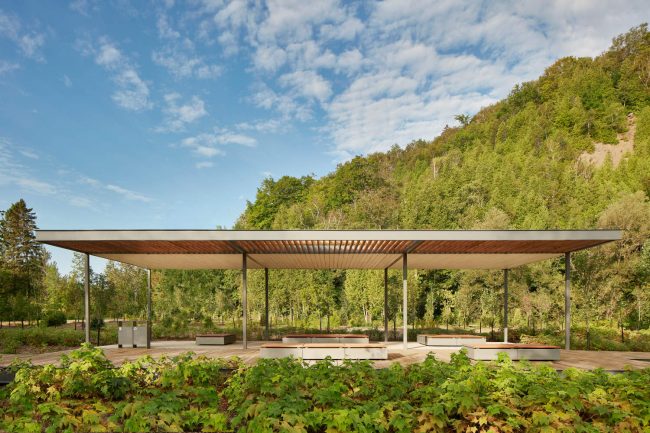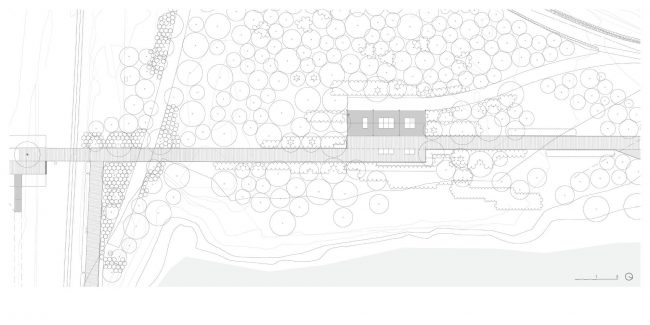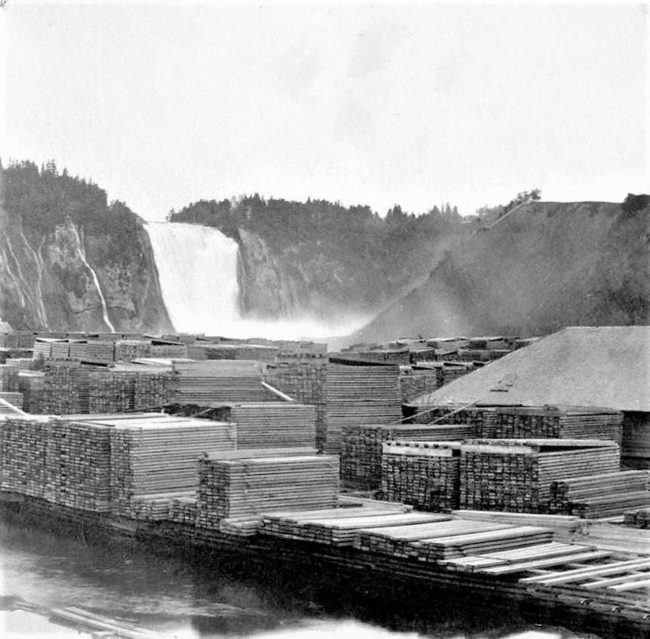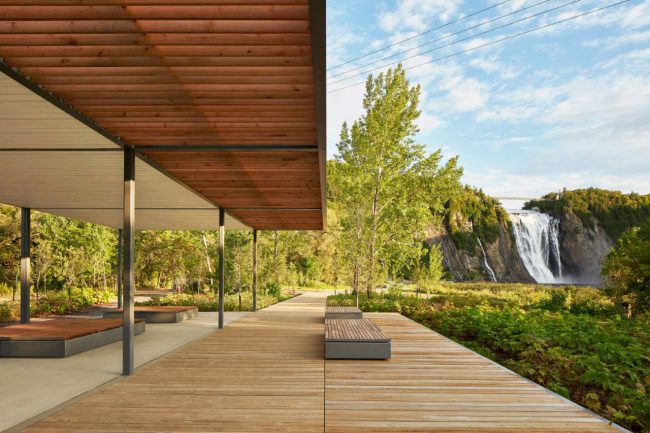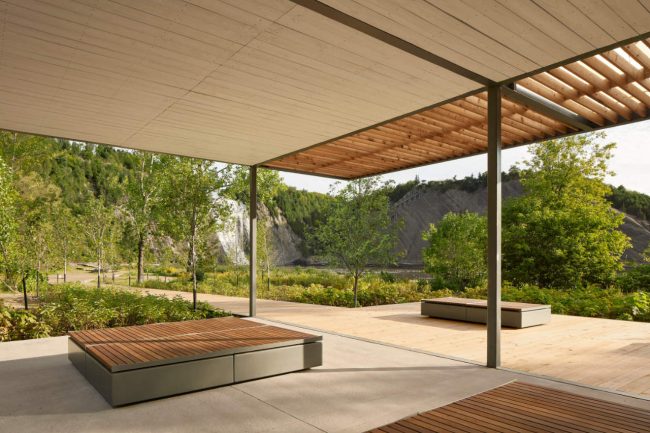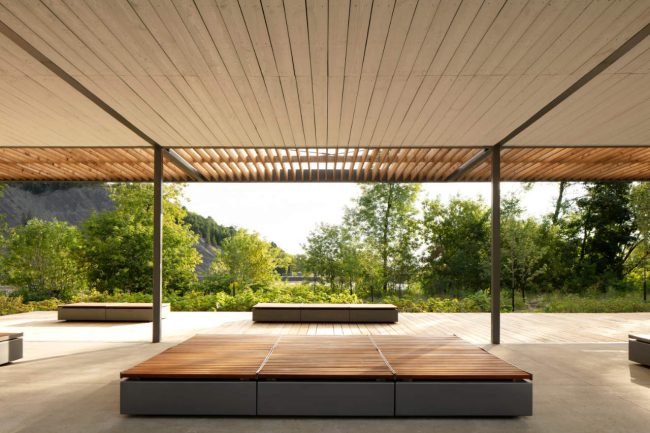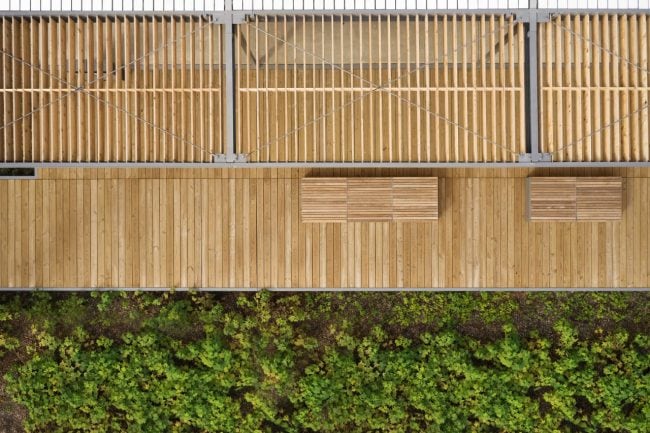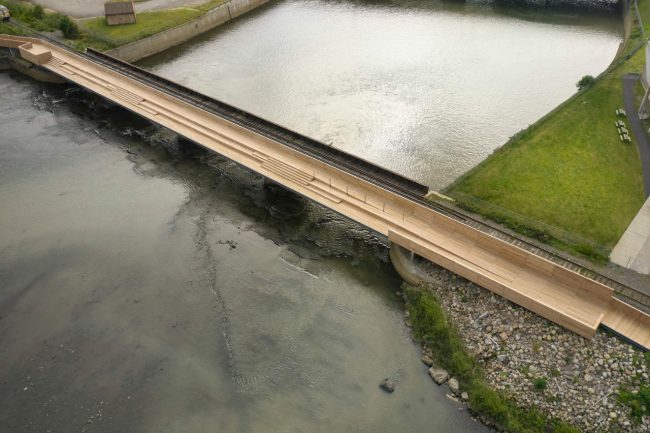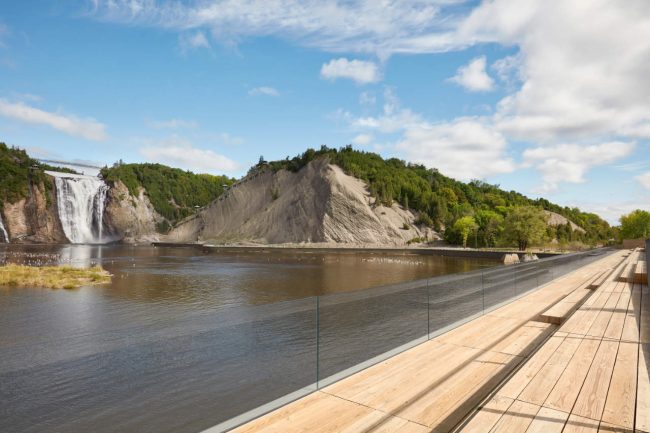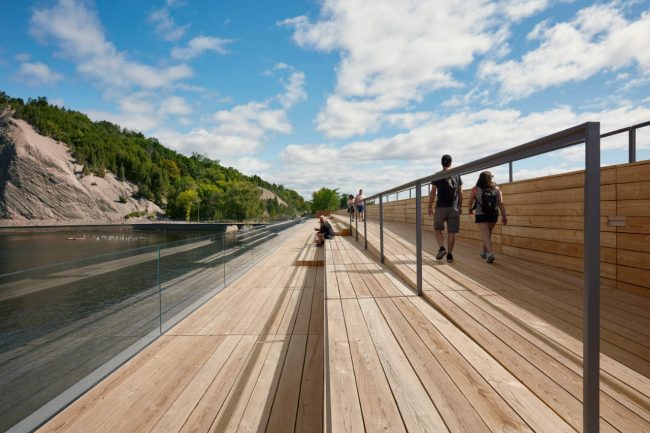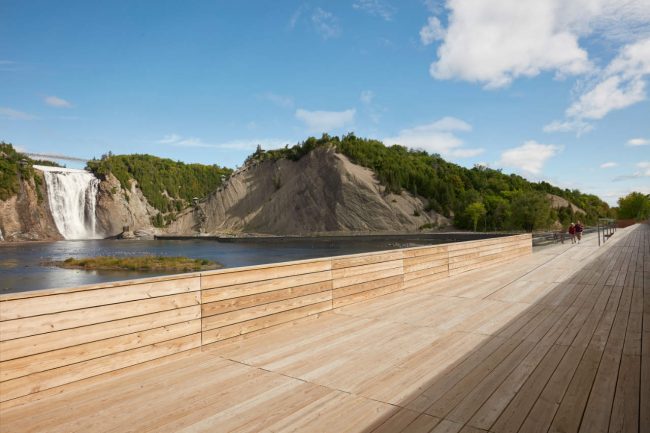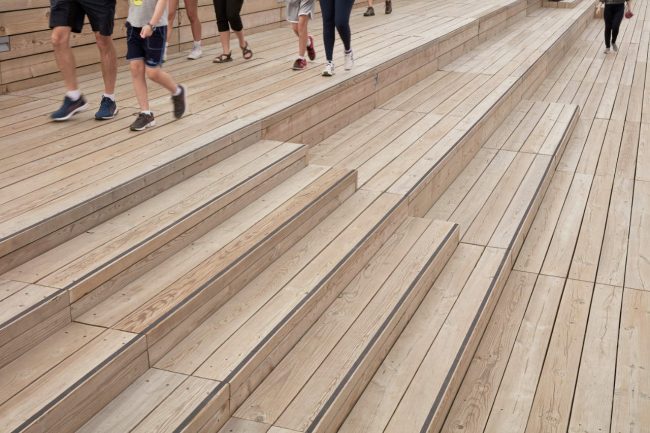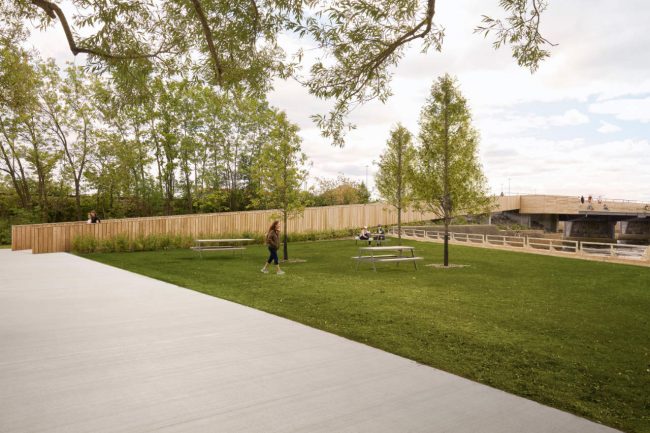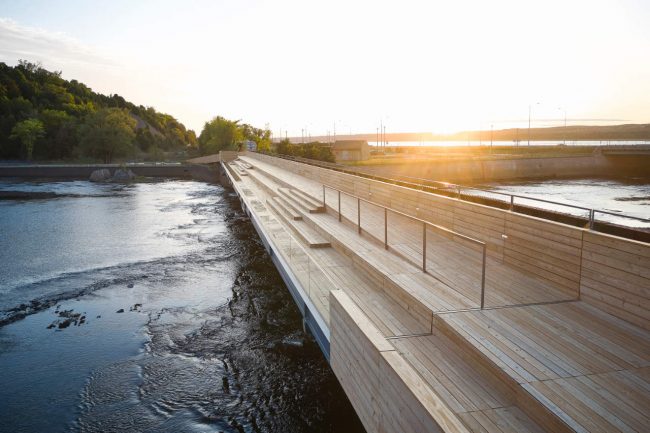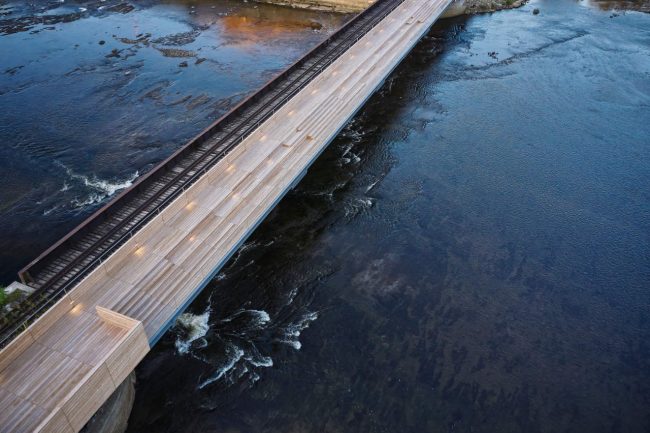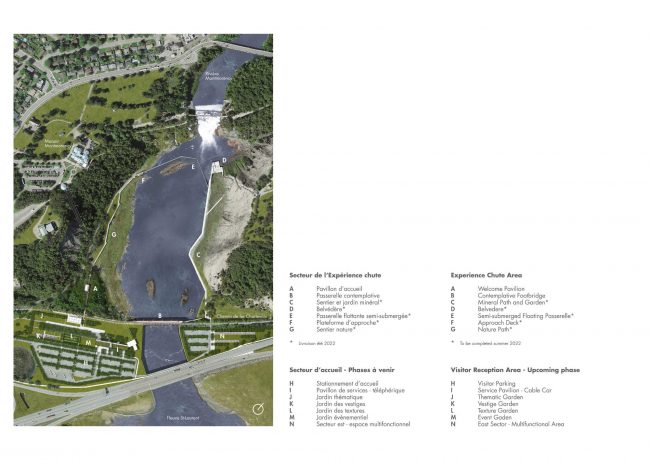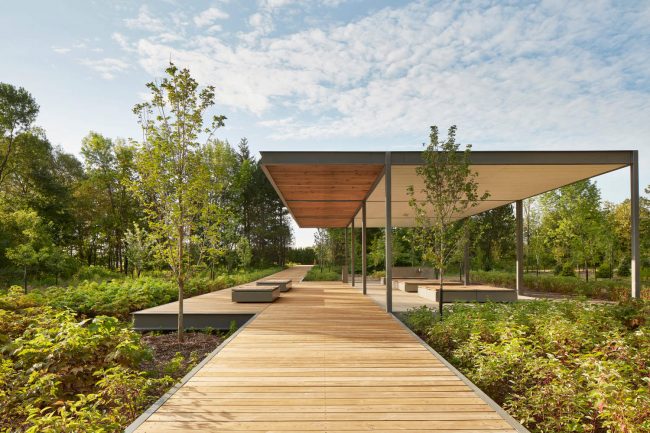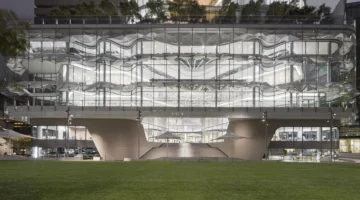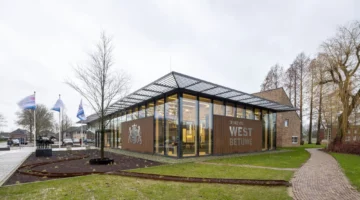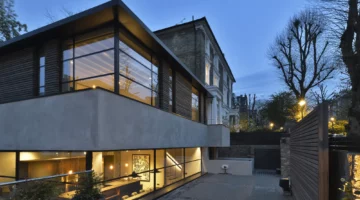More than 800,000 people visit the Parc de la Chute-Montmorency each year to enjoy the remarkable 83m high waterfall and the scenic surroundings.
Intervening in such an emblematic, vast, and imposing site requires respect and humility so that the visitor’s experience is entirely dedicated to contemplation and experience of the falls. The new installations realized as part of the Experience Chute project showcase the natural beauty of the Parc by drawing on its existing character.
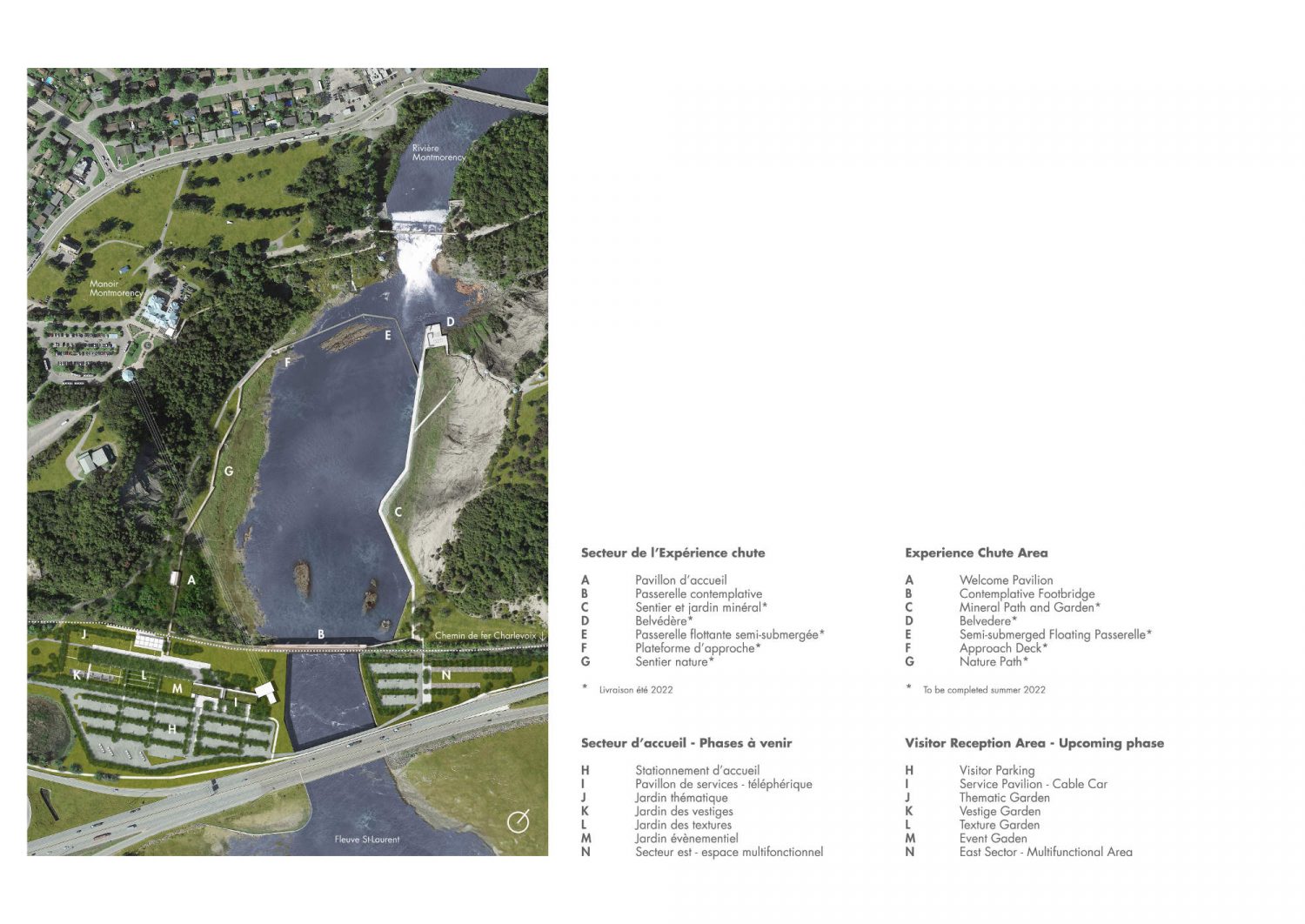
The genius loci
The project approach aims to create an intervention that responds to the program defined by Sépaq, while responding harmoniously and meaningfully with the site. The multi-phase analysis of the historical evolution of the Parc fed the design process. The project seeks to assert its own personality in harmony with the genius loci of the site from the scale of the overall design language down to the specific resolution of the detailed components.
The overall vision is rooted in the historical richness of the place, while differentiating with the top of the cliff. The upper plateau of the waterfall is still associated with one of the great English estates that overlooked the St. Lawrence in the 19th century through the presence of the Manoir Montmorency. The historical evolution of the foot of the falls is representative of the layers of urbanization specific to the banks of Quebec City. From a natural site where the St. Lawrence River came to touch the foot of the cliff, named at the time the Bas-du-Sault, it was gradually modified by human interventions to develop its military, energy, and industrial potential, as well as by the passage of the railroad and a highway on large embankments.
The vestiges of this rich heritage are found at the foot of the falls and make up the material and immaterial memory from which the new developments find evocative meaning.
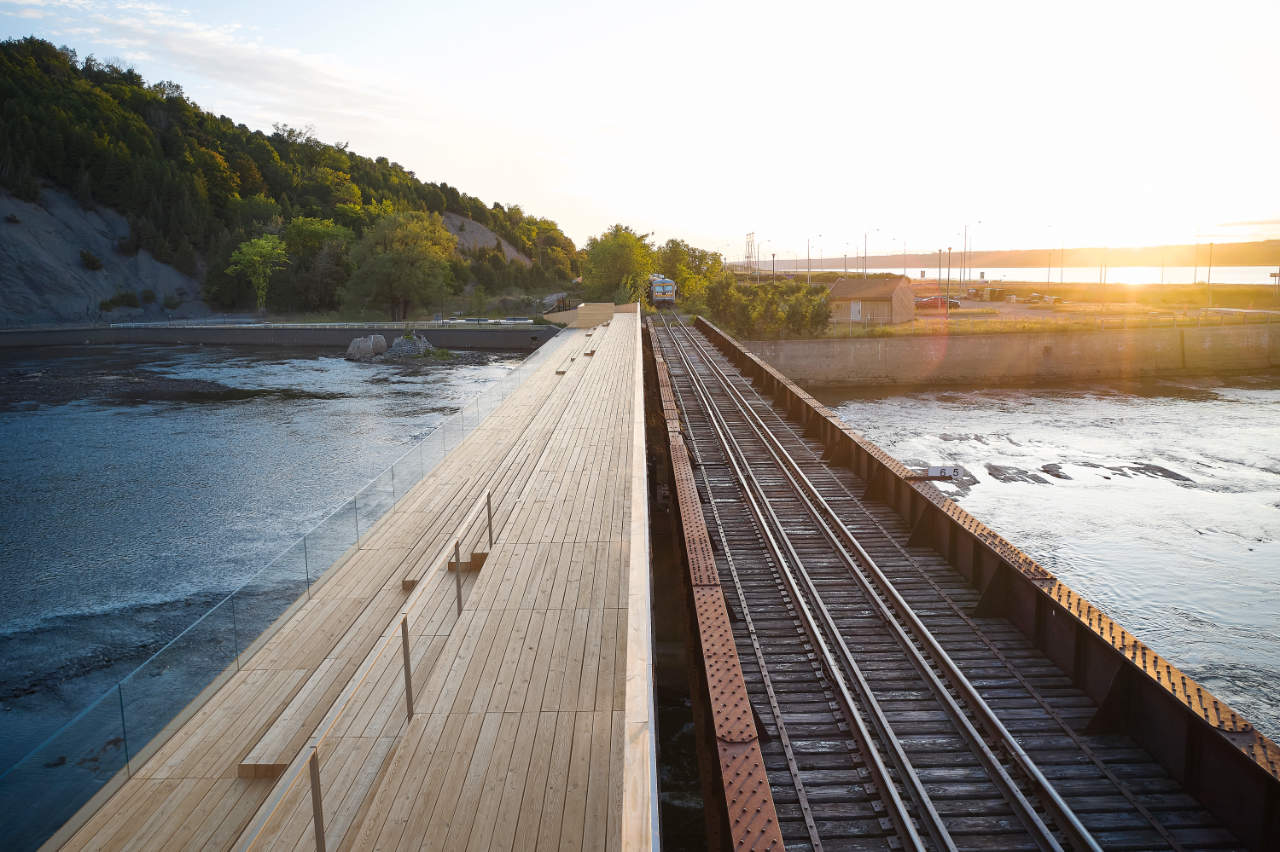
Sensitive architectural gestures magnifying the landscape
The overall project is divided into two sub-sectors:
The Visitor Reception Area, south of the Chemin de fer Charlevoix aims to redefine the entrance route, reconfigure, and introduce landscape into the parking area, develop thematic gardens, interpret and highlight industrial remains and build a new service pavilion.
The Experience Chute Area, north of the railroad tracks, which consolidates a universally accessible circuit, allows visitors to approach the waterfall and complete a 4-segment tour around the river basin:
- The Contemplative Footbridge downstream from the basin (widening and upgrades of the existing pedestrian footbridge adjacent to the railway bridge).
- The Mineral Path and garden on the east side of the basin (upgrading of the concrete paths and belvedere built in 1967 ; gestures inspired by the modern movement).
- The Semi-submerged Passerelle upstream of the basin (development of a Semi-submerged Passerelle, hidden within the water, allowing visitors to approach the waterfall and feel its hydraulic power; a true technical innovation).
- The Nature Path and welcome pavilion on the western shore of the basin (development on stilts delicately integrated into the coastline).
The master plan sets out design guidelines for the site and represents Sépaq’s new roadmap for realizing its vision. A vision that reflects current and collective values with a contemporary resolution, intertwining architecture, landscape, programming and interpretation.
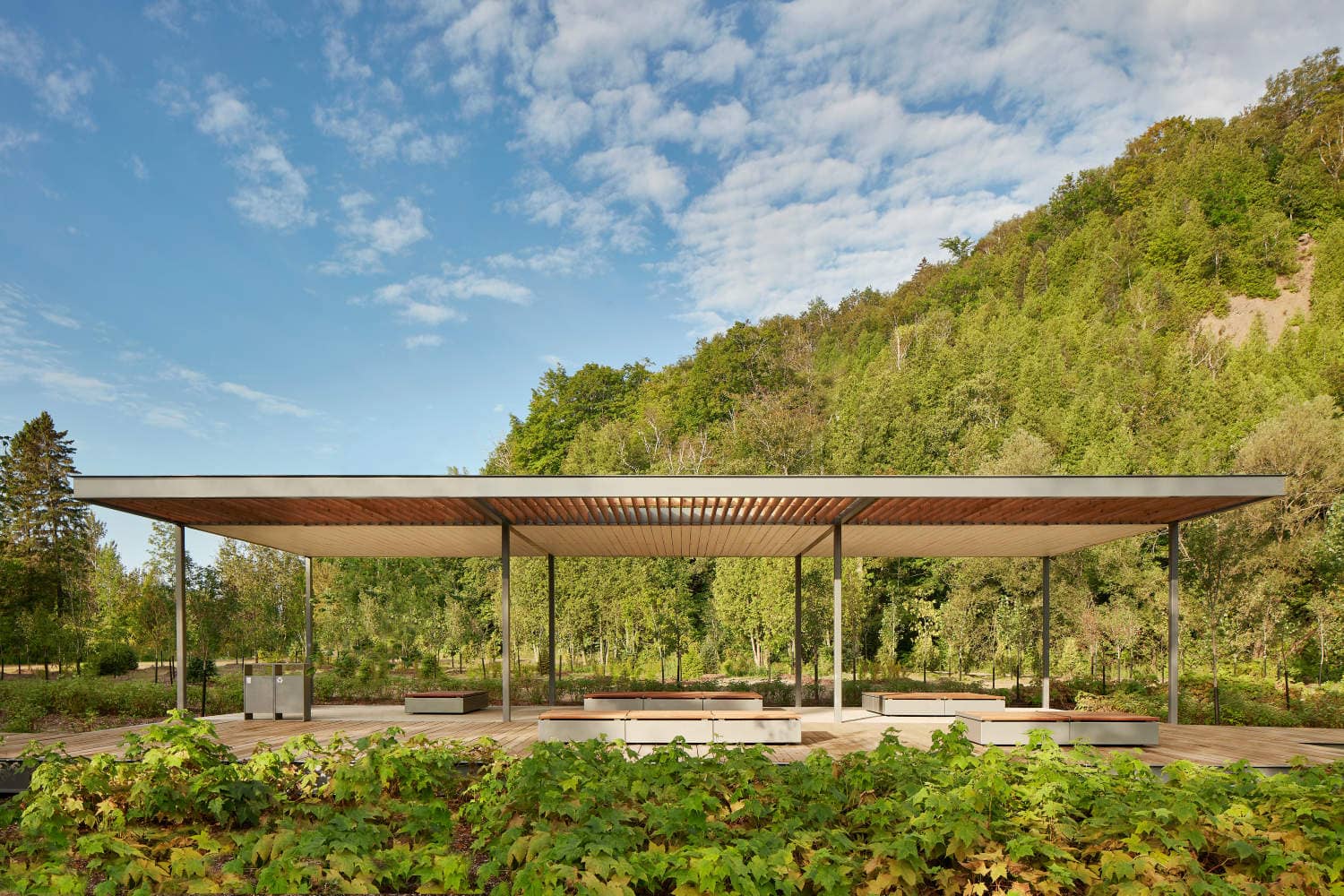
Welcome Pavilion
The Welcome Pavilion defines the western segment of the path around the Montmorency Basin and marks the entry point to the Experience Chute. The new pavilion is located on a gentle slope towards the basin and is designed to respect the sensitive environment of the river shoreline and its flora.
Built on the site of an abandoned electrical substation, the pavilion serves as a landmark and focal point for visitors. Expressing a third dimension in the landscape, its minimalist steel structure - devoid of vertical bracing through the skillful integration of rigid frames - features a canopy cantilevering towards the water, emphasizing the horizontality of the construction and framing views of the landscape. The assembly details of this structure have been finely studied to conceal both the structural and drainage requirements of the roof. The waterproofing of the roof is contained within the thickness of the structure and is clad in whitewashed wood siding; a texture referencing the Manor’s cladding that characterizes the historic estate of the upper plateau of the Falls. The roof is a single, continuous plane; the pergola of the cantilever allows for a play of light and shadow on the ground that changes with the hours and seasons.
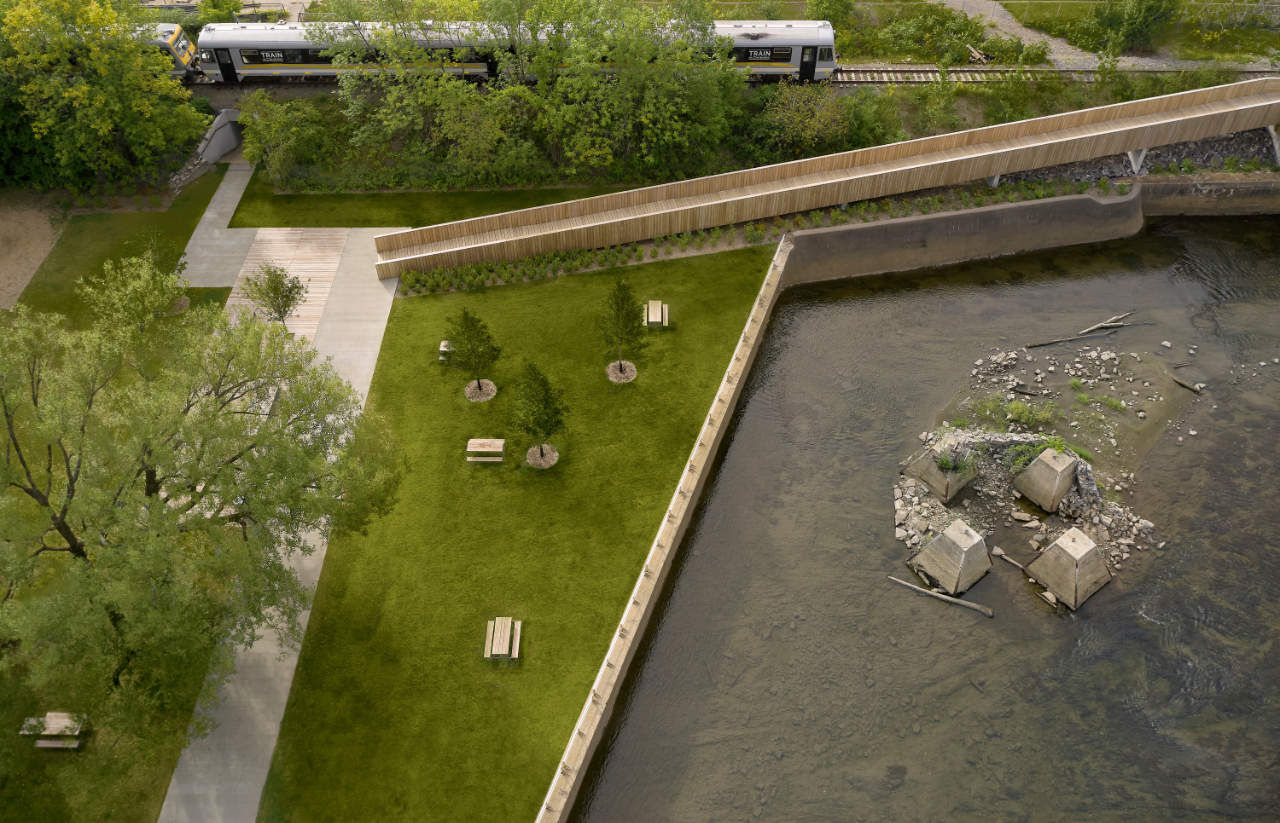
The wooden boardwalks of the Nature Path are adjacent to the pavilion; they hover on stilts, minimizing their impact on the environment. The lamination and tectonics of the boardwalks is inspired both by the iconography of log piles that accumulated at the base of the falls during the log drives, but also by the stacks that characterized the sawmill landscape of the last century. The forest, surrounding the pavilion and its paths, is enhanced by the planting of native trees and shrubs. The welcome pavilion acts as a place for pause, allowing visitors to take a break in the shade, while offering a privileged perspective on the Falls.

Contemplative Footbridge
The Contemplative Footbridge is a part of the Experience Chute that, like the project as a whole, is intended to resonate with the genius loci of the site. The widening and enhancement of the existing bridge that ran parallel to the railway bridge over the river is in response to a programmatic challenge. During the summer season, many groups of tourists visit the site and have only a few moments to appreciate the magnitude and spectacle of this natural wonder; the original 2m wide pedestrian bridge offered a privileged view of the waterfall and was used as an observation point by many visitors, creating a bottleneck to pedestrian traffic crossing the river. The widening of the bridge to 5.5m, and creation of terracing levels offers both a walkway space above and a belvedere space below, allowing visitors to stop, sit and contemplate the waterfall while other flow through.
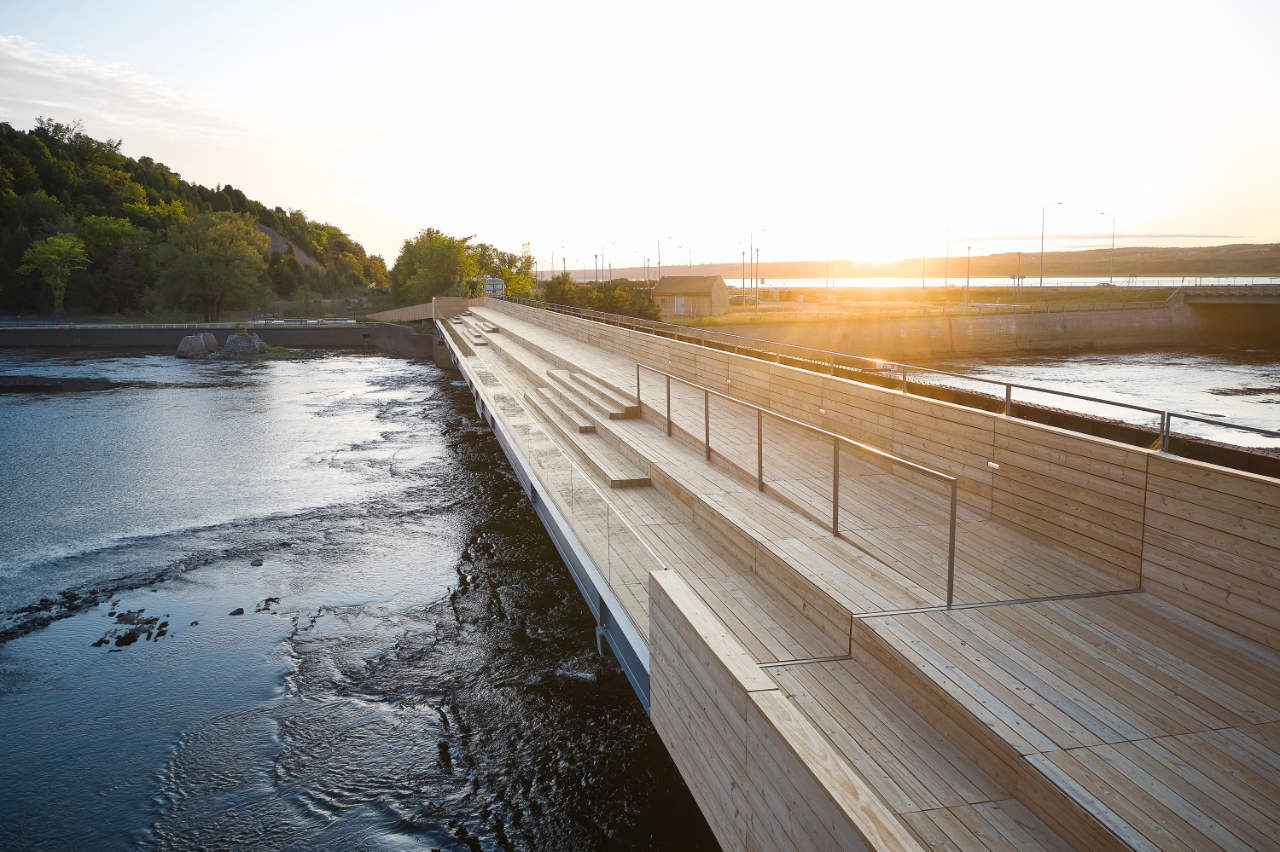
The form and the architectural treatment of the new footbridge are directly inspired by the spirit of the place in addition to skillfully responding to numerous structural constraints. The form seeks to create a dialogue between nature and architecture; the horizontality emphasizes and magnifies the verticality of the waterfall and the cliffs. The footbridge seeks to evoke, for the visitor, the dominant characteristics of the iconography of the site – the industrial landscape of the 19th century sawmills. It evokes its character and memory in a sober and contemporary fashion. The wood siding and the geometric laminations are inspired by the wood piles and the log drive that characterized the past landscape. The nearly immaterial plane of the ultra-clear glass guardrails concealed shoe give all its meaning to the notion of contemplation.

